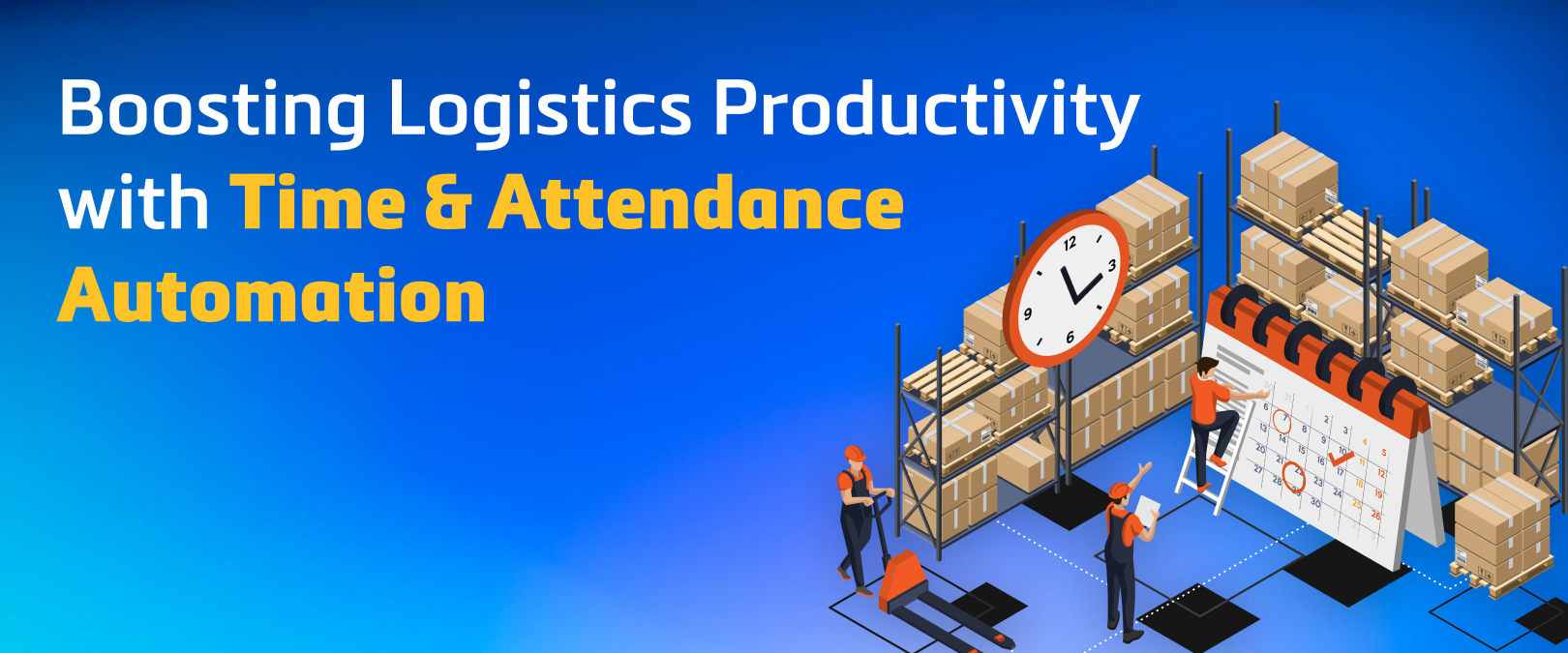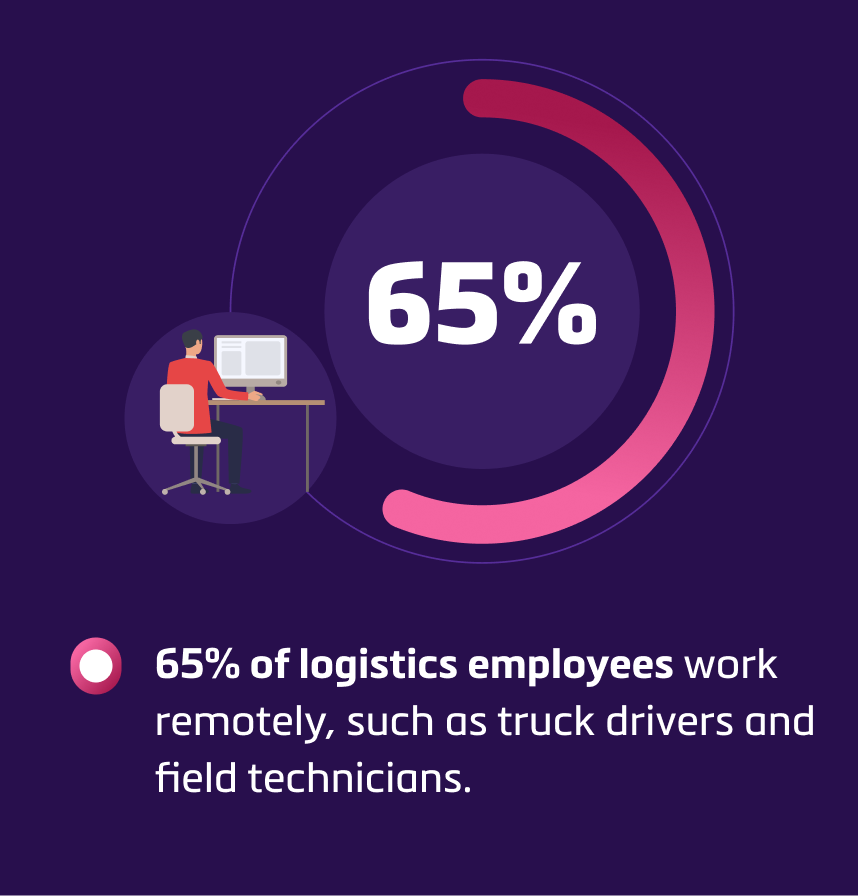
Boosting Logistics Productivity with Time & Attendance Automation

Keeping track of everyone’s hours and schedules can be a real headache. That’s where automated time and attendance tracking systems come in, like trusty navigators guiding your team through the twists and turns of workforce management. Get ready to dive into the world of streamlined logistics, where automated systems take the hassle out of tracking employee hours.. If you’re curious to learn how automation is reshaping the logistics landscape, keep reading to know more on this.
Challenges of Attendance Management in Logistics Industry

Managing attendance in the logistics industry poses several unique challenges due to the nature of the work environment and the diverse roles within the industry. Some of the key challenges include:
Remote Work
65% of logistics employees work remotely, such as truck drivers and field technicians. Tracking their attendance accurately can be challenging without proper systems in place, especially when they are in transit or at remote locations with limited connectivity.
Shift Work
Logistics operations often run around the clock, requiring employees to work in shifts. Managing attendance becomes complex when dealing with multiple shift schedules, overtime, and ensuring adequate coverage at all times.
Compliance and Regulations
The logistics industry is subject to various regulations regarding working hours, rest periods, and breaks, especially for drivers. Ensuring compliance with these regulations while managing attendance adds another layer of complexity.
Geographical Dispersion
Logistics companies may have operations spread across different locations, regions, or even countries. Coordinating attendance management across these dispersed locations can be challenging without centralized systems and communication channels.
Seasonal Demands
Some logistics companies experience fluctuations in demand based on seasonal trends or specific events. Managing attendance during peak seasons or sudden spikes in workload requires effective planning and flexibility.
Employee Turnover
High employee turnover rates are common in the logistics industry, particularly for roles like warehouse workers and delivery drivers. Constantly onboarding new employees and ensuring they understand attendance policies can be time-consuming and costly.
Communication Challenges
Effective communication is crucial for managing attendance, especially in a fast-paced industry like logistics. Ensuring that employees receive timely updates about schedules, changes, and expectations can be challenging, particularly when relying on traditional communication methods.
Get a free Consultation WhatsApp
Why are automated systems crucial for efficiency in logistics?
Automated time and attendance tracking systems play a crucial role in optimizing workforce management in logistics. Here’s how:
Accuracy
Traditional methods like manual punch cards or timesheets are prone to errors and inaccuracies, leading to discrepancies in payroll and labor costs. Automated systems ensure precise tracking of employee hours, reducing errors and ensuring fairness in pay. Companies report a 15% reduction in overtime costs through better forecasting and scheduling.
Efficiency
In automated logistics management, where time is of the essence, automated systems streamline the process of tracking employee hours. Employees can clock in and out quickly using biometric scanners, RFID tags, or mobile apps, saving time and increasing productivity.
Compliance
The logistics industry is subject to various labor regulations and union agreements regarding working hours, breaks, and overtime. Automated systems help ensure compliance with these regulations by accurately recording work hours and breaks.
Real-time Insights
Automated time and attendance systems provide real-time data on employee attendance and labor costs. This data allows managers to make informed decisions regarding staffing levels, scheduling, and resource allocation. HR managers report a 20% increase in efficiency in workforce planning with the use of real-time data.
Integration with Payroll
Automated systems seamlessly integrate with payroll software, eliminating the need for manual data entry and reducing the risk of payroll errors. This integration saves time, reduces administrative overhead, and ensures accurate and timely payment to employees. A stat says that there is 30% increase in remote workforce productivity with the implementation of automated systems.
Remote Work Management
With the rise of remote work in logistics, especially in administrative roles, automated time and attendance systems enable employees to clock in and out from anywhere, providing flexibility while still ensuring accountability. Moreover, companies report a 30% increase in remote workforce productivity with the implementation of automated systems.
Analytics and Forecasting
Advanced automated systems offer analytics and reporting capabilities, allowing managers to analyze trends in employee attendance, identify areas for improvement, and forecast future staffing needs based on historical data. Companies report a 15% reduction in overtime costs through better forecasting and scheduling.
Cost Savings
By reducing errors, streamlining processes, and providing valuable insights, automated time and attendance systems ultimately lead to cost savings for logistics companies. On average, companies implementing these systems report a reduction in labor costs by 2-5% and a decrease in payroll processing time by 20-30%.
Get a free Consultation WhatsApp
Conclusion
As logistics companies continue to adapt to evolving market dynamics and technological advancements, the role of automated time and attendance tracking systems will only become more critical. By embracing automation and harnessing the power of data, logistics managers can streamline operations, enhance productivity, and drive sustainable growth and success in an increasingly competitive landscape.













